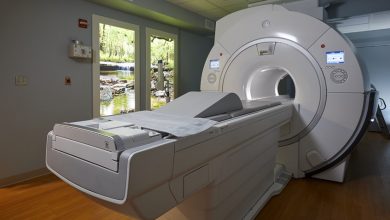The Art of Post-Cycle Therapy: Understanding PCT Steroids
PCT Steroids

The use of anabolic steroids in the pursuit of enhanced physical performance and muscle development is a practice that often involves careful planning and consideration. Among the essential elements of a responsible steroid cycle is post-cycle therapy (PCT). PCT involves the use of specific medications, commonly referred to as PCT steroids, to help the body recover its natural hormonal balance after the completion of a steroid cycle. This blog aims to delve into the art of post-cycle therapy, shedding light on the importance of PCT steroids, the medications involved, and the principles that guide this critical phase in the world of performance enhancement.
Understanding the Need for PCT:
Anabolic steroids, whether taken orally or through injections, have a profound impact on the body’s endocrine system. These synthetic hormones can suppress the production of natural testosterone, leading to hormonal imbalances and potential side effects. The primary goals of post-cycle therapy are to:
1. Restore Natural Testosterone Production:
Anabolic steroids can suppress the hypothalamic-pituitary-gonadal (HPG) axis, disrupting the normal signaling pathway that regulates testosterone production. PCT steroids aims to stimulate the HPG axis, kickstarting the production of endogenous testosterone.
2. Prevent Estrogenic Side Effects:
Some steroids can aromatize, converting into estrogen. Elevated estrogen levels can lead to side effects such as water retention, gynecomastia (enlarged breasts in males), and mood swings. PCT often includes medications to manage estrogen levels.
3. Preserve Gains and Minimize Side Effects:
By facilitating a smoother transition from the steroid cycle to a state of hormonal balance, PCT steroids helps preserve the gains made during the cycle while minimizing the risk of side effects associated with hormonal imbalances.
Key Components of PCT Steroids:
1. Selective Estrogen Receptor Modulators (SERMs):
SERMs are a class of medications that act as estrogen receptor antagonists in certain tissues and as estrogen agonists in others. The most commonly used SERMs in PCT steroids are Clomid (clomiphene) and Nolvadex (tamoxifen). These medications block estrogen receptors in the pituitary gland and hypothalamus, stimulating the release of luteinizing hormone (LH) and follicle-stimulating hormone (FSH). This, in turn, promotes natural testosterone production.
2. Human Chorionic Gonadotropin (hCG):
hCG is a hormone that mimics the action of luteinizing hormone (LH) in the body. It is often used in conjunction with SERMs during PCT steroids. hCG helps stimulate the Leydig cells in the testes, promoting the production of testosterone. However, prolonged or excessive use of hCG can desensitize the testes to LH, and its use should be carefully monitored.
3. Aromatase Inhibitors (AIs):
Aromatase is an enzyme responsible for converting androgens into estrogen. Aromatase inhibitors, such as Arimidex (anastrozole) and Aromasin (exemestane), are used to control estrogen levels during PCT. By inhibiting aromatase, these medications help prevent estrogen-related side effects.
4. Clomid (Clomiphene):
Clomid is a versatile SERM that acts on the estrogen receptors in the hypothalamus and pituitary gland. It stimulates the release of gonadotropins, which, in turn, signal the testes to produce testosterone. Clomid is often used in PCT steroids to jumpstart the recovery of the HPG axis.
5. Nolvadex (Tamoxifen):
Nolvadex is another commonly used SERM in PCT. It functions similarly to Clomid by blocking estrogen receptors in the hypothalamus and pituitary gland, promoting the release of LH and FSH. Nolvadex is often preferred for its milder side effect profile.
Principles of Post-Cycle Therapy:
1. Timing is Crucial:
Initiating PCT at the right time is crucial for optimal results. The timing depends on the half-life of the steroids used during the cycle. PCT typically begins when exogenous steroids have cleared the system, allowing the body to naturally respond to the medications used in therapy.
2. Individualized Approach:
The choice of PCT medications and dosages should be tailored to individual factors, including the specific steroids used, the duration of the cycle, and the individual’s response to the compounds. Factors such as age, health status, and goals also play a role in determining the most appropriate PCT approach.
3. Gradual Tapering:
Abrupt discontinuation of steroids can shock the body and hinder the recovery of natural hormonal production. PCT steroids often involves a gradual tapering of dosages to provide a smoother transition and allow the body to adapt progressively.
4. Monitoring and Adjustments:
Regular monitoring of hormonal levels through blood tests is crucial during PCT. Adjustments to the PCT protocol may be necessary based on individual responses and changes in hormonal profiles. This requires a proactive approach to health management.
5. Integration of Supportive Measures:
Supporting overall health during PCT steroids is essential. Adequate nutrition, hydration, sleep, and stress management contribute to the body’s ability to recover. Additionally, incorporating supplements such as antioxidants and liver support can aid in mitigating potential side effects.
6. Consideration of Individual Goals:
The goals of the individual, whether they involve maintaining muscle gains, fertility, or minimizing side effects, should guide the selection of PCT steroids medications and protocols. A well-designed PCT plan aligns with individual objectives and aspirations.
Potential Challenges and Risks:
1. hCG Overuse:
Excessive or prolonged use of hCG in PCT steroids can desensitize the testes to luteinizing hormone (LH), potentially leading to a delayed recovery of natural testosterone production. Careful monitoring and adherence to recommended dosages are crucial.
2. Estrogen Rebound:
Abrupt cessation of aromatase inhibitors in PCT can lead to an estrogen rebound, where estrogen levels spike. This can result in estrogenic side effects, emphasizing the importance of gradual tapering and monitoring throughout the PCT process.
3. Individual Responses:
Individual responses to PCT steroids medications can vary. Some individuals may require a more extended or more aggressive PCT protocol, while others may respond well to a milder approach. Monitoring hormonal levels and making adjustments accordingly is essential.
Conclusion:
Post-cycle therapy is an integral aspect of responsible steroid use, emphasizing the importance of restoring the body’s natural hormonal balance after a cycle. The art of PCT steroids involves a nuanced understanding of the medications involved, individualized protocols, and a commitment to health monitoring. By approaching PCT with precision, individuals can maximize the retention of gains, minimize side effects, and foster a sustainable and health-conscious approach to performance enhancement. It is crucial for individuals considering or currently engaged in steroid use to seek guidance from healthcare professionals to develop a well-informed and tailored post-cycle therapy plan.




